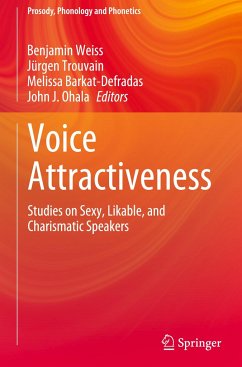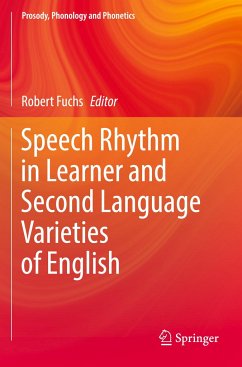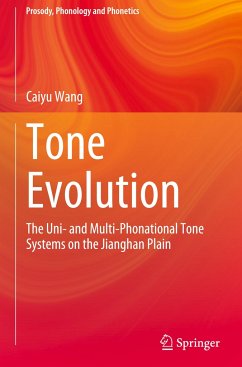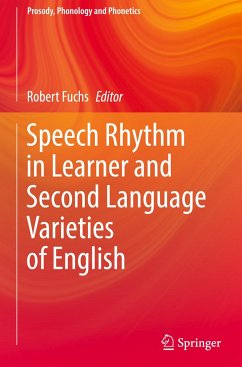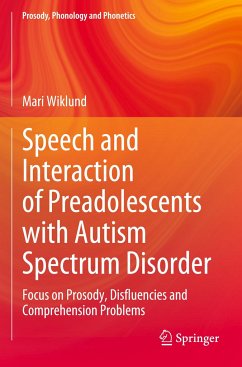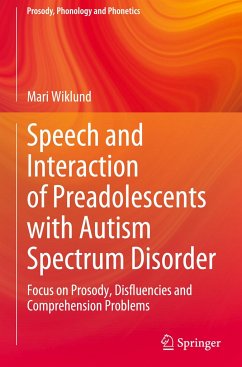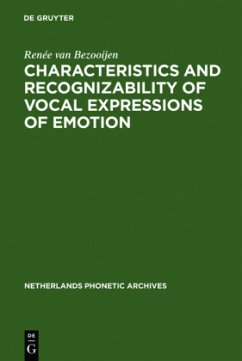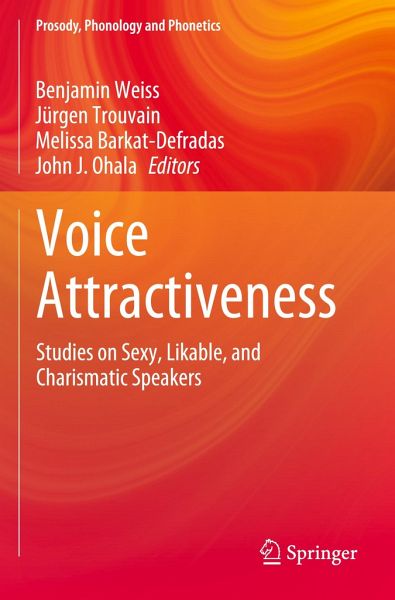
Voice Attractiveness
Studies on Sexy, Likable, and Charismatic Speakers
Herausgegeben: Weiss, Benjamin; Trouvain, Jürgen; Barkat-Defradas, Melissa; Ohala, John J.
Versandkostenfrei!
Versandfertig in 6-10 Tagen
121,99 €
inkl. MwSt.

PAYBACK Punkte
61 °P sammeln!
This book addresses various aspects of acoustic-phonetic analysis, including voice quality and fundamental frequency, and the effects of speech fluency and non-native accents, by examining read speech, public speech, and conversations. Voice is a sexually dimorphic trait that can convey important biological and social information about the speaker, and empirical findings suggest that voice characteristics and preferences play an important role in both intra- and intersexual selection, such as competition and mating, and social evaluation. Discussing evaluation criteria like physical attractive...
This book addresses various aspects of acoustic-phonetic analysis, including voice quality and fundamental frequency, and the effects of speech fluency and non-native accents, by examining read speech, public speech, and conversations. Voice is a sexually dimorphic trait that can convey important biological and social information about the speaker, and empirical findings suggest that voice characteristics and preferences play an important role in both intra- and intersexual selection, such as competition and mating, and social evaluation. Discussing evaluation criteria like physical attractiveness, pleasantness, likability, and even persuasiveness and charisma, the book bridges the gap between social and biological views on voice attractiveness. It presents conceptual, methodological and empirical work applying methods such as passive listening tests, psychoacoustic rating experiments, and crowd-sourced and interactive scenarios and highlights the diversity not only of the methods usedwhen studying voice attractiveness, but also of the domains investigated, such as politicians' speech, experimental speed dating, speech synthesis, vocal pathology, and voice preferences in human interactions as well as in human-computer and human-robot interactions. By doing so, it identifies widespread and complementary approaches and establishes common ground for further research.





